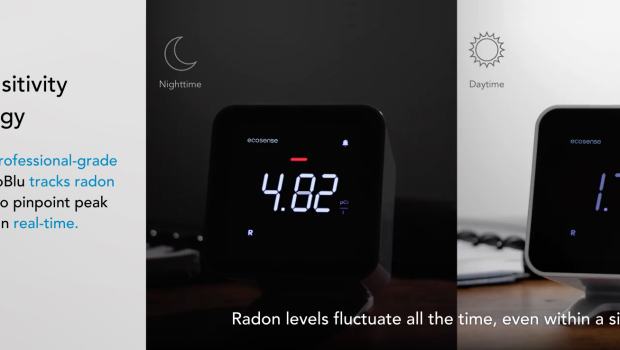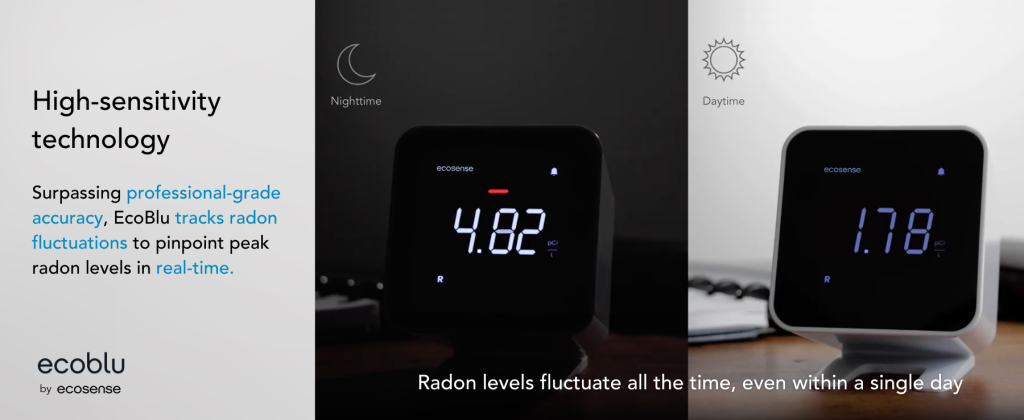Understanding Radon: The Health Risks and How to Protect Your Home and Family from its Danger
Health Beat finds that 95% of US homes have one or more smoke alarms, and 42% have carbon monoxide detectors. You have likely seen firsthand the importance of protecting your family from the threat of fire and carbon monoxide poisoning, but what about the dangers of radon gas?
Radon is an invisible, odorless, and tasteless gas. In most cases, it doesn’t cause detectable short-term health symptoms, but the Environmental Protection Agency (EPA) recognizes it as being responsible for the least 21,000 deaths in the US every year. In fact, the EPA ranks exposure to radon gas as the most significant cause of lung cancer mortality in the US after smoking.
Only early and accurate detection followed by ongoing radon monitoring can help you keep your home safe from this silent killer.
How radon gas infiltrates homes, schools, and offices
Radon is released into the air from uranium-rich granite formations in the ground and soil. When the gas remains outdoors, it is able to dissipate quickly. But as a gas, it naturally migrates upward and outward, where it can enter and accumulate inside the buildings where we live and work.
Radon gas is often pulled inside buildings as differences between internal and external air pressure cause it to enter through tiny crevices between basement floors and walls, cracks in the foundation, unsealed spaces around drains, access holes drilled for plumbing, construction joints, and crawl spaces. When this gas becomes trapped inside homes, schools, and offices, it cannot easily escape or dissipate, causing its levels to rise.
The health risks associated with long-term exposure to radon gas
Like lung cancer caused by smoking cigarettes, radon poisoning occurs gradually over many years, as the onset of lung cancer typically takes a decade or longer to develop. In fact, a radon level of 4.0 pCi/L is equivalent to smoking eight cigarettes a day. Unfortunately, according to the Mayo Clinic, there are no definitive symptoms of radon poisoning.
This is why it’s crucial to be able to identify high levels of radon wherever they may be present. By the time the signs of radon poisoning are clearly visible, lung cancer is likely already present, and it’s usually too late to treat effectively. As such, preventing exposure to high levels of radon with continuous monitoring tools is key in safeguarding your health.
Detecting and mitigating radon gas
Concentrations of radon gas are reported in picocuries per liter (pCi/L), and while perfect radon detector readings of 0 pCi/L would be ideal, some radon will always be present — even with perfect ventilation. Outdoors, radon levels typically range from 0.135-0.405 pCi/L. Unfortunately, radon levels tend to be higher in our homes.
The EPA recommends taking action when radon levels exceed 4.0 pCi/L and estimates that at least 15% of American houses have radon concentrations at or above this threshold. Furthermore, the EPA believes that if people take steps to keep radon levels lower than this standard, the mortality rate for radon poisoning would drop by half.
The significance of advances in radon gas monitoring
Since radon levels in your house fluctuate all the time, the most reliable monitoring is consistent testing over time. Radon levels can fluctuate even within a single day, and they are influenced by factors such as temperature, humidity, and barometric pressure. Typically, they tend to rise during the fall and winter when families and employees spend more time indoors.
High levels of radon can be found within any home, school, or workplace, regardless of the building’s age or construction. The good news, however, is that there are several options available for measuring and continuously monitoring radon levels that allow you to take the proper measures for mitigation.
In the past, only professional assessors could determine a building’s interior concentration of radon gas levels, but their results required expensive labs with agonizingly long turnovers. Today, some modern detection devices offer accurate readings in minutes rather than weeks as a simple, low-cost option that any homeowner can easily implement. These portable detectors can be moved from room to room and provide continuous monitoring, similar to a smoke alarm.
Some mitigation systems successfully reduce levels by close to 99%. If you discover that you have dangerously high radon levels in your home, even more straightforward measures like letting fresh air in through open windows and doors will help decrease radon levels in minutes. However, you will likely need to contact an NRPP-certified or state-licensed radon mitigator to help mitigation efforts if the indoor radon level four is found at or above four pCi/L.
The first step is to educate yourself about the threat radon gas poses to you and your loved ones, but no one needs to live in fear. With ongoing, accurate radon monitoring and mitigation, you can breathe easy knowing that your home is safe for everyone who takes shelter there.
By Insoo Park, Founder & CEO — Ecosense

































